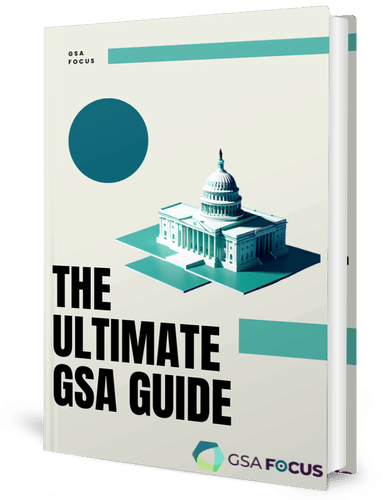One of the most challenging parts of my job as a GSA Contract Specialist is explaining to customers why their NAICS Codes do not line up with GSA Special Item Numbers (SIN’s). The short answer is that they are two different categorization systems spanning almost all conceivable Industries. So, there will naturally be discrepancies.
Do you need help Navigating the GSA Process? Schedule a call with a GSA Expert to guarantee success.
 About NAICS Codes
About NAICS Codes
Table of Contents
ToggleNAICS Code Lookup – This is the website to help you keyword search for your industry and identify the NAICS Codes that apply to your business.
NAICS Codes are numbers that indicate your primary categories of business. There is a code for limited service restaurants one for full-service restaurants, one for maid services (use the lookup term “Janitorial”), etc… The code merely describes your revenue-producing business activity and is shared by all businesses within the same categories of business.
NAICS Codes are utilized by Government Buyers to categorize their purchasing needs. The System for Award Management (SAM) database (previously CCR & ORCA) is where a Contractor selects all relevant NAICS Codes to their business. And federal buyers can use this system to locate potential vendors to fulfill their requirements. So, it is important that your company does the proper research and lists all relevant NAICS Codes in SAM.
About GSA Special Item Numbers (SIN’s)
A Special Item Number lists GSA contractor service and/or product requirements as a sub-category to a GSA Schedule. You can view all of the SIN’s for a particular GSA Schedule by navigating through the eLibrary GSA Schedules Page and selecting the link to the left of the description. Then, a full list of current GSA SIN’s will be viewable.
Every SIN has it’s own specific scope, and often times will include several NAICS Code categories. For example, GSA SIN 132-50 (IT Training) only has one NAICS Code applied. However, GSA SIN 811-002 (Complete Facilities Maintenance) has 25 NAICS Codes applied.
Connecting a NAICS Code to a GSA SIN

When you are entering the SIN’s of your GSA Contract into the E-Offer system, you must connect a NAICS Code to each SIN. In the drop-down, sometimes there is only one NAICS Codes to choose from, and sometimes there are many. The problem is, that the NAICS Codes often times have no relation to the SIN that they have been categorized under. There is simply a huge disconnect, but the person working in the GSA eOffer system still must select an option.
The good news is that as long as your SAM Record reflects all of the proper NAICS Codes, you will be fine. Applying a NAICS Code to each SIN is something that the GSA requires, and forces you to submit mis-aligned information. This part of the process isn’t something that can be perfected because it is flawed from the beginning. The only solution is to use logic where there is no logical answer.
Do you need help Navigating the GSA Process? Schedule a call with a GSA Expert to guarantee success.
Deciphering Business Size: The Role of NAICS Codes in Size Determination

Understanding NAICS Codes
NAICS Codes are a standardized numerical method used to classify businesses according to their primary economic activities. Developed by the United States, Canada, and Mexico, these codes provide a uniform structure for statistical data analysis of the business economy.
NAICS Codes and Size Determination
When it comes to government contracting, Size Determination is crucial as it influences a business’s eligibility for various programs designed to support small businesses, including government contracts set aside specifically for such enterprises.
How NAICS Codes Define Business Size
- Industry-Specific Revenue and Employee Thresholds: The Small Business Administration (SBA) assigns a size standard to each NAICS Code, which can be either a maximum number of employees or a maximum amount of annual receipts a business can have and still be considered a ‘small’ business within that industry.
- Size Standards Variation: Size standards vary widely among different industries. For example, manufacturing companies may be considered ‘small’ if they have 500 employees or fewer, while businesses in the service sector could have size standards based on annual receipts that range from $7.5 million to $38.5 million.
- Annual Receipts Calculation: The SBA calculates annual receipts as a business’s total income plus the cost of goods sold. This figure is averaged over a period of three to five years to determine if a business meets the size standard for its primary NAICS Code.
- Employee Count Considerations: For industries with size standards based on the number of employees, the SBA considers the average number of employees over the past 12 months, including all individuals employed on a full-time, part-time, or temporary basis.
The Process of Size Determination
Businesses seeking to engage in government contracting must first determine their primary NAICS Code based on their main revenue source. After identifying the primary NAICS Code, the following steps are typically involved in Size Determination:
- Self-Assessment: Businesses should initially perform a self-assessment by reviewing their average annual receipts or employee count relative to the size standard for their NAICS Code.
- Formal Certification: For certain contracting programs, businesses may need to obtain formal certification from the SBA that they qualify as a small business.
- Size Protests: Competitors or other parties can file size protests, questioning a business’s size status. In such cases, the SBA reviews the protest and makes a formal Size Determination.
- Regular Updates: As businesses grow or as industry standards change, businesses must monitor their size status, as they could transition from ‘small’ to ‘large’ based on the current standards.
Implications of Size Determination in Government Contracting
Size Determination can have significant implications:
- Access to Set-Asides: Small businesses have exclusive access to certain government contracts known as ‘set-asides’, which are reserved specifically for small enterprises to encourage diversity and competition.
- Competitive Edge: Being classified as a small business can provide a competitive edge when bidding for government contracts, as certain contracts are out of reach for large companies.
- Joint Ventures and Partnerships: Small businesses can enter into joint ventures and partnerships to bid on contracts without losing their small business status, provided they adhere to the SBA’s regulations.
- Subcontracting Opportunities: Large businesses winning government contracts often need to subcontract a portion of the work to small businesses, creating opportunities for small enterprises to participate in larger projects.
In conclusion, NAICS Codes play an essential role in Size Determination, a pivotal factor in government contracting. Understanding and adhering to these classifications allows businesses to maximize their opportunities within the federal marketplace. It’s crucial for businesses to stay informed about their NAICS Codes and the associated size standards to maintain their competitive advantage and eligibility for government contracts.
Do you need help Navigating the GSA Process? Schedule a call with a GSA Expert to guarantee success.
Top 8 FAQs on NAICS Codes
- What is a NAICS Code?
- NAICS Code is a classification system that categorizes businesses based on their economic activities.
- How is the NAICS Code used in government contracting?
- NAICS codes are used to identify and classify businesses in government procurement, ensuring the right businesses are targeted for specific contracts.
- Can a business have multiple NAICS Codes?
- Yes, a business can have multiple NAICS Codes if it operates in various sectors or offers diverse services.
- Where can I find my business’s NAICS Code?
- NAICS Codes can be found on the U.S. Census Bureau website or through business registration documents.
- How often are NAICS Codes updated?
- NAICS Codes are reviewed and updated every five years to reflect changes in the economy and industry structures.
- Why is accurate NAICS Code classification important for businesses?
- Accurate NAICS classification is crucial for eligibility in government contracts, accurate market analysis, and for availing specific business benefits.
- How can NAICS Codes aid in market research?
- NAICS Codes provide a structured way to analyze industry segments, study competitors, and identify market trends.
- What should I do if my business’s activities span multiple NAICS Codes?
- Identify the primary activity of your business for the main NAICS Code, and use additional codes to cover other significant activities.


 About NAICS Codes
About NAICS Codes
